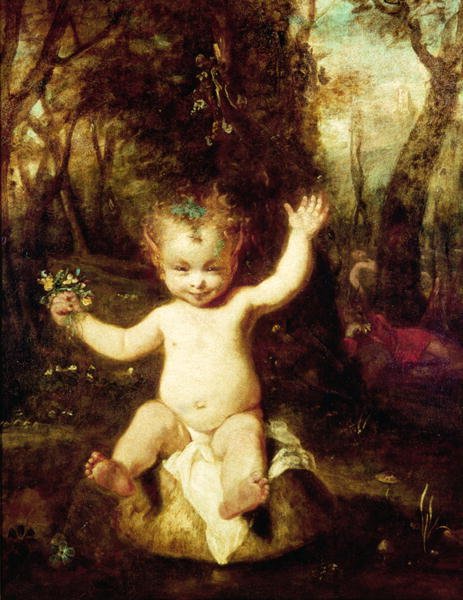Playful Puck (Robin Goodfellow) – Master Of Harmless Mischief And Shakespeare’s Visit To The Magic Valley
Ellen Lloyd - AncientPages.com - Puck, also called Robin Goodfellow or "Hobgoblin," is undoubtedly one of the most popular characters in English folklore.
Famous for mischievous pranks and practical jokes, Puck has captured the hearts of many people.
Left: Joseph Noel Paton, Puck, and Fairies, detail from A Midsummer Night's Dream. - Right: Puck by Carl Andersson Midsommarkransen, Stockholm, Sweden. Credit: Boberger, Public Domain - CC BY-SA 3.0
One reason Puck has become so popular is that several authors and poets have included this playful character in their works.
Shakespeare's Visit To The Magic Valley
The most famous Puck version can be encountered in William Shakespeare's play A Midsummer Night's Dream, based on this fascinating ancient figure. In Shakespeare's play, Puck is a clever fairy master of harmless mischief. His benevolent pursuit of physical fun makes him adorable.
Of course, we like Puck in the play A Midsummer Night's Dream because Shakespeare used his talent to create a magnificent world where fairies are primarily free from demonic qualities.
In Shakespeare's play, Puck is the servant of the fairy King Oberon, who is angry with Titania, the fairy Queen. The king is jealous of the Queen's Indian slave boy, and Puck is sent to acquire a magical flower.
When given to a sleeping person, the flower's juice can make people fall in love. The Puck spreads the juice but on the wrong person. His mistake leads to people falling in love with the wrong people, which is not what King Oberon wished for.
In Puck, by Sir Joshua Reynolds, for the Boydell Shakespeare Gallery, the once-dangerous figure is rendered harmless. Credit: Public Domain
Consequently, Puck must correct his mistake, which initiates a series of events.
This error correction sets in motion an adventurous sequence, leading to various developments and encounters. These actions amend his initial misstep but result in unexpected consequences and experiences for the characters involved.
“I am that merry wanderer of the night.
I jest to Oberon and make him smile,
When I, a fat and bean-fed horse, beguile,
Neighing in the likeness of a filly foal:
And sometimes lurk I in a gossip's* bowl,
In the very likeness of a roasted crab,*
And when she drinks against her lips, I bob
And on her withered dewlap* pour the ale.
The wisest aunt, telling the saddest* tale,
Sometimes, for three-foot stool mistaketh me;
Then slip I from her bum, down topples she,
And "tailor*" cries and falls into a cough;
And then the whole quire* holds their hips and laughs,
And waxen* in their joy, and neeze,* and swear
A merrier hour was always well-spent there.
(A Midsummer Night's Dream, 2.1.43-57)
It is also quite interesting to learn how the great English writer William Shakespeare (1564- 1616) may have come up with the idea of giving Puck a significant role in one of his plays.
In his book Middle-Earth in Magic Mirror Maps, author Stephen Ponty writes that Shakespeare received his knowledge of the Cambrian fairies from his friend Richard Price, son of Sir John Price, of the convent of Brecon.
According to Ponty, "it is even claimed that Cwm Pwca, or Puck Valley, a part of the romantic glen of the Clydach, in Breconshire, is the original scene of the Midsummer Night's Dream '--a fancy as light and airy as Puck himself. [According to a letter written by the poet Campbell to Mrs. Fletcher in 1833 and published in her Autobiography, it was thought Shakespeare went in person to see this magic valley. 'It is no later than yesterday,' wrote Campbell, 'that I discovered a probability--almost near a certainty-that Shakespeare visited friends in the very town (Brecon in Wales) where Mrs. Siddons was born and that he there found in a neighboring glen, called "The Valley of Fairy Puck," the principal machinery of his "Midsummer Night's Dream."
Illustration from the title page of Robin Goodfellow: His Mad Pranks and Merry Jests (1629). Credit: Public Domain
We need to find out how and why the great English poet gave Puck a significant role in his play. Maybe he had read about this curious folklore creature and liked it so much that he considered the figure worthy of becoming part of his play.
It should be added that the idea of Shakespeare visiting a magic valley is based on Welsh tradition.
Where Does The Name Puck Come From?
Where the name Puck comes from is still being determined. The modern English word is attested already in Old English as puca. Different types of tricksters frequently appear in myths and legends worldwide.
It has been suggested that Puck is of either Scandinavian, Celtic, or Germanic origin. Whatever the case, the figure has been part of English folklore for hundreds of years. The earliest reference to "Robin Goodfellow," cited by the Oxford English Dictionary, is from 1531.
Modern scholars think the name can be traced to Ireland, pointing out that the word is widely distributed in Irish place names. Since Puck is a shape-shifter, he can quickly turn into, for example, a horse and bird, and in Ireland, he is known as Pooka, a mythical and not entirely benevolent prankster.
Puck Is A Lonely But Playful Trickster
Puck is a lonely figure who tries to get friends on many accounts. He can do minor housework for humans, and if you give him a small gift such as a glass of milk or other such treats, he can even work for you. Puck is not a selfish creature. At night, he sometimes does small services for the family he presides with. In Scotland, people know him as a brownie.
The Germans refer to him as Kobold or Knecht Ruprecht and in Scandinavian, he is called I Nissë God-dreng (Nisse god dräng)
Puck is popular among adults and children. Robin Goodfellow is simply a beloved mythological figure.
Written by Ellen Lloyd – AncientPages.com
First version of this article was published on June 24, 2021
Copyright © AncientPages.com All rights reserved. This material may not be published, broadcast, rewritten or redistributed in whole or part without the express written permission of AncientPages.com and Ellen Lloyd
Expand for referencesMore From Ancient Pages
-
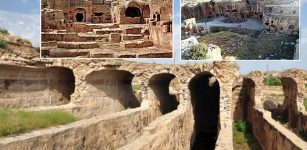 Focus On Unique And Spectacular Gallery Grave In Ancient City Of Dara, Mardin
News | Aug 24, 2020
Focus On Unique And Spectacular Gallery Grave In Ancient City Of Dara, Mardin
News | Aug 24, 2020 -
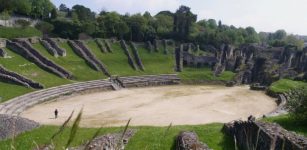 Huge Gallo-Roman Amphitheater Of Saintes Will Be Saved For Future Generations – New Project Started
News | Jan 23, 2021
Huge Gallo-Roman Amphitheater Of Saintes Will Be Saved For Future Generations – New Project Started
News | Jan 23, 2021 -
 Hades – ‘The Unseen’ God Of The Dead, Fertility, Wealth And Earth’s Minerals
Featured Stories | Jun 2, 2020
Hades – ‘The Unseen’ God Of The Dead, Fertility, Wealth And Earth’s Minerals
Featured Stories | Jun 2, 2020 -
 5,000-Year-Old Arminghall Henge In Norwich Reveals Some Of Its Secrets
Archaeology | Dec 20, 2022
5,000-Year-Old Arminghall Henge In Norwich Reveals Some Of Its Secrets
Archaeology | Dec 20, 2022 -
 Ancient Egyptian Tombs With Stunning Trove Of Artifacts And Human Remains Unearthed In Saqqara
Archaeology | Jan 17, 2024
Ancient Egyptian Tombs With Stunning Trove Of Artifacts And Human Remains Unearthed In Saqqara
Archaeology | Jan 17, 2024 -
 200,000-Year-Old Grass Bed Discovered In South Africa’s Border Cave
Archaeology | Aug 14, 2020
200,000-Year-Old Grass Bed Discovered In South Africa’s Border Cave
Archaeology | Aug 14, 2020 -
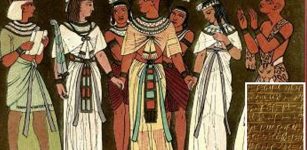 Asenath And The Golden Tablet That Changed Her Destiny
Biblical Mysteries | May 10, 2019
Asenath And The Golden Tablet That Changed Her Destiny
Biblical Mysteries | May 10, 2019 -
 Great Lady Of Champagne – Barbe-Nicole Clicquot Ponsardin: Widow, Mother, Skilled Businesswoman
Featured Stories | Aug 22, 2019
Great Lady Of Champagne – Barbe-Nicole Clicquot Ponsardin: Widow, Mother, Skilled Businesswoman
Featured Stories | Aug 22, 2019 -
 Sobek: A 2,500-Year-Old Mummified Nile Crocodile – On Display At The British Museum
Archaeology | Dec 9, 2015
Sobek: A 2,500-Year-Old Mummified Nile Crocodile – On Display At The British Museum
Archaeology | Dec 9, 2015 -
 Mystery Of Pre-Adamic Didanum Race: Giants Who Were Ancestors Of The Nephilim and Rephaim
Biblical Mysteries | Oct 2, 2014
Mystery Of Pre-Adamic Didanum Race: Giants Who Were Ancestors Of The Nephilim and Rephaim
Biblical Mysteries | Oct 2, 2014 -
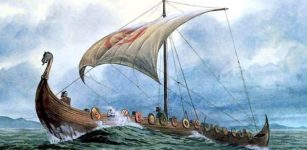 Long Serpent: Most Famous Viking Longship Of King Olav Tryggvason Of Norway And Its Fate
Featured Stories | Jun 7, 2017
Long Serpent: Most Famous Viking Longship Of King Olav Tryggvason Of Norway And Its Fate
Featured Stories | Jun 7, 2017 -
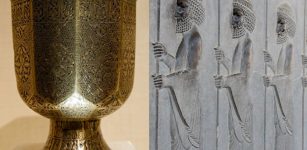 Cup Of Jamshid – Holy Grail Of Ancient Persia Offered Immortality And Visions Of The Future
Featured Stories | Jan 16, 2019
Cup Of Jamshid – Holy Grail Of Ancient Persia Offered Immortality And Visions Of The Future
Featured Stories | Jan 16, 2019 -
 Oldest DNA From Domesticated American Horse Solves An Legendary Shipwreck Mystery
Archaeology | Jul 27, 2022
Oldest DNA From Domesticated American Horse Solves An Legendary Shipwreck Mystery
Archaeology | Jul 27, 2022 -
 What Can Grinding Stones Reveal About Europe’s Earliest Neolithic Communities?
Archaeology | Feb 28, 2025
What Can Grinding Stones Reveal About Europe’s Earliest Neolithic Communities?
Archaeology | Feb 28, 2025 -
 Beware Of The Night Marchers – Deadly Ghosts Of Warriors Who Kill With Just One Look
Featured Stories | Jul 23, 2019
Beware Of The Night Marchers – Deadly Ghosts Of Warriors Who Kill With Just One Look
Featured Stories | Jul 23, 2019 -
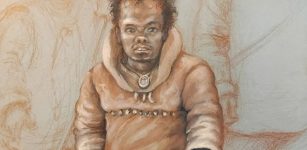 Ice Age Teens Experienced Puberty Stages Similar To Modern Adolescents, Study Reveals
Archaeology | Sep 13, 2024
Ice Age Teens Experienced Puberty Stages Similar To Modern Adolescents, Study Reveals
Archaeology | Sep 13, 2024 -
 Vast Network Of Previously Unknown European Bronze Age Megastructures Discovered
Archaeology | Nov 20, 2023
Vast Network Of Previously Unknown European Bronze Age Megastructures Discovered
Archaeology | Nov 20, 2023 -
 Ziggurats, Axis Mundi And Strong Connection To Religion In Mesopotamia
Featured Stories | Mar 17, 2021
Ziggurats, Axis Mundi And Strong Connection To Religion In Mesopotamia
Featured Stories | Mar 17, 2021 -
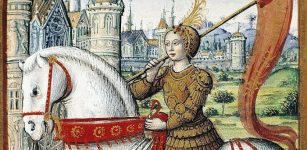 On This Day In History: Joan Of Arc Enters Orleans, The City Besieged By The English – On Apr 29, 1429
News | Apr 29, 2016
On This Day In History: Joan Of Arc Enters Orleans, The City Besieged By The English – On Apr 29, 1429
News | Apr 29, 2016 -
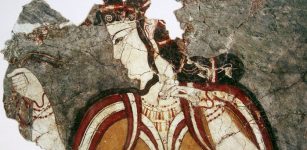 Genetic Mystery Solved: Ancient DNA Reveals Greeks Descended From The Minoans And The Mycenaeans
Archaeology | Aug 4, 2017
Genetic Mystery Solved: Ancient DNA Reveals Greeks Descended From The Minoans And The Mycenaeans
Archaeology | Aug 4, 2017


